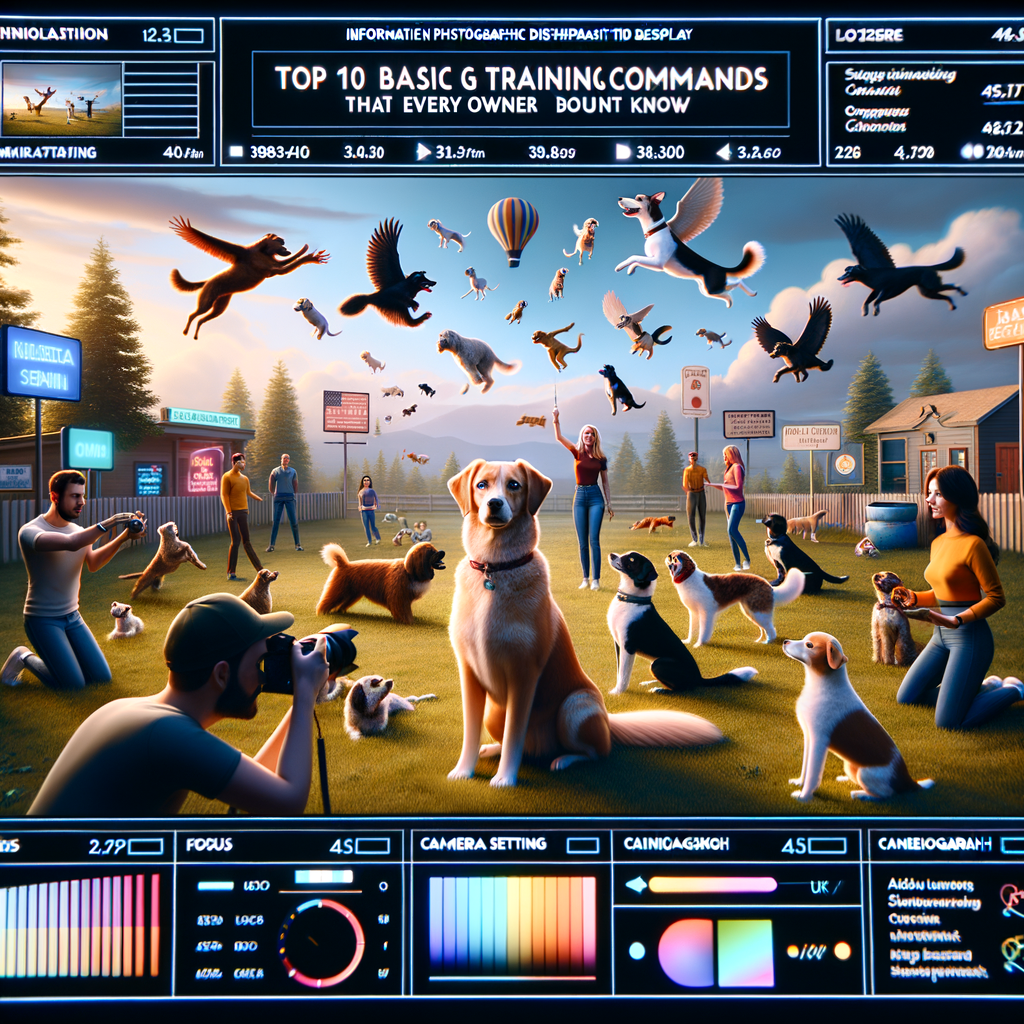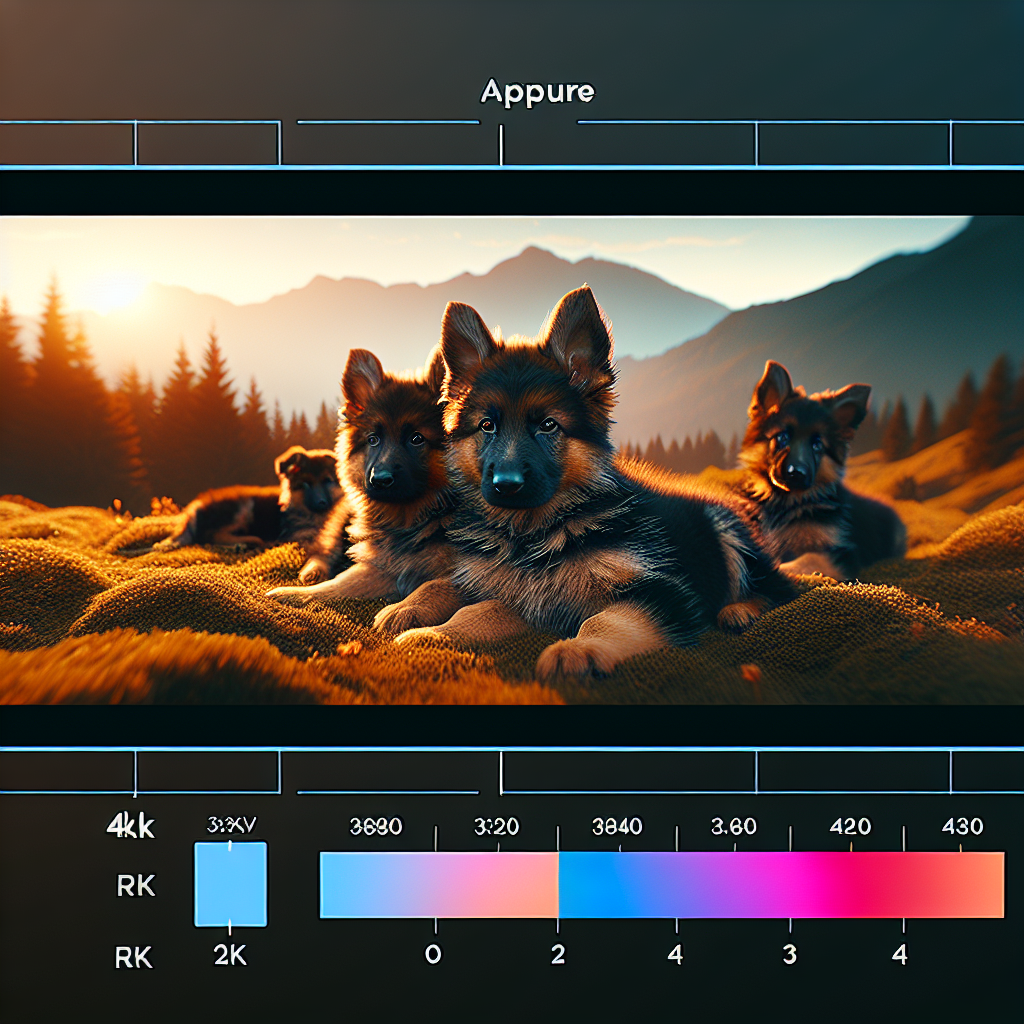Top 10 Basic Dog Training Commands Every Owner Should Know
Training your dog is an essential part of being a responsible pet owner. Teaching your furry friend basic commands not only helps establish a strong bond between you and your dog but also ensures their safety and well-being

Top 10 Basic Dog Training Commands Every Owner Should Know
-
Table of Contents
- Introduction
- Sit Command: How to Teach Your Dog to Sit on Command
- Stay Command: Essential Tips for Training Your Dog to Stay
- Come Command: Step-by-Step Guide to Teaching Your Dog to Come When Called
- Down Command: Effective Techniques for Training Your Dog to Lie Down
- Leave It Command: Teaching Your Dog to Ignore Temptations and Focus on You
- Conclusion
Introduction
Training your dog is an essential part of being a responsible pet owner. Teaching your furry friend basic commands not only helps establish a strong bond between you and your dog but also ensures their safety and well-being. In this article, we will explore the top 10 basic dog training commands that every owner should know. These commands provide a solid foundation for further training and help create a well-behaved and obedient canine companion. Let’s dive in and discover the essential commands that will make your dog a joy to be around.
Sit Command: How to Teach Your Dog to Sit on Command
Teaching your dog basic commands is an essential part of being a responsible pet owner. Not only does it help establish a strong bond between you and your furry friend, but it also ensures their safety and the safety of others. One of the most fundamental commands every dog should learn is the “sit” command. In this article, we will guide you through the process of teaching your dog to sit on command.
Before you begin the training process, it’s important to remember that consistency is key. Dogs thrive on routine, so make sure to set aside a specific time each day for training sessions. Start by finding a quiet and distraction-free area where you and your dog can focus without any interruptions.
To begin, hold a treat close to your dog’s nose, making sure they can smell it. Slowly move the treat upwards, allowing their head to follow the treat. As their head moves up, their bottom will naturally lower into a sitting position. Once they are in a sitting position, say the word “sit” in a clear and firm tone, and immediately reward them with the treat.
Repeat this process several times, gradually reducing the height at which you hold the treat. Eventually, your dog will associate the word “sit” with the action of sitting down. Remember to praise and reward your dog each time they successfully follow the command.
If your dog is having difficulty understanding the concept, you can gently guide their bottom into a sitting position while saying the command. However, avoid pushing them down forcefully, as this can create a negative association with the command.
As your dog becomes more comfortable with the “sit” command, you can start introducing hand signals. This will allow you to give the command even when you are unable to speak, such as in a noisy environment. To do this, hold your hand up with your palm facing towards your dog and your fingers pointing upwards. As you give the verbal command, simultaneously raise your hand. With consistent practice, your dog will learn to associate the hand signal with the command.
It’s important to remember that training takes time and patience. Some dogs may pick up the “sit” command quickly, while others may require more practice. Be patient with your furry friend and always end each training session on a positive note, even if they haven’t fully mastered the command yet.
Once your dog has mastered the “sit” command, you can move on to teaching them other basic commands such as “stay,” “lie down,” and “come.” These commands will further enhance your dog’s obedience and ensure their safety in various situations.
In conclusion, teaching your dog to sit on command is an essential skill that every owner should know. By following these steps and being consistent in your training, you can successfully teach your dog to sit on command. Remember to be patient, use positive reinforcement, and always end each training session on a positive note. With time and practice, your furry friend will become a well-behaved and obedient companion.
Stay Command: Essential Tips for Training Your Dog to Stay
Training your dog to stay is an essential command that every owner should teach their furry friend. It not only ensures their safety but also helps establish a strong bond between you and your pet. In this article, we will discuss some essential tips to successfully train your dog to stay.
First and foremost, it’s important to start training your dog to stay in a quiet and distraction-free environment. This will help them focus and understand the command more easily. Begin by commanding your dog to sit or lie down. Once they are in a calm position, use a clear and firm voice to say “stay” while holding your hand up, palm facing towards them. This gesture will serve as a visual cue for your dog to understand the command.
Consistency is key when training your dog to stay. Make sure to use the same command and hand gesture every time you want them to stay. Repetition is crucial in reinforcing the behavior you want to see. Practice the stay command for short periods initially and gradually increase the duration as your dog becomes more comfortable with it.
To make the training process more effective, use positive reinforcement techniques. Reward your dog with treats, praise, or a favorite toy when they successfully stay in place. This positive association will motivate them to obey the command and make the training experience enjoyable for both of you.
It’s important to remember that dogs have different learning abilities and attention spans. Be patient and understanding during the training process. If your dog gets distracted or starts to move, calmly redirect them back to the original position and repeat the command. Avoid using punishment or negative reinforcement as it can create fear and anxiety in your pet, hindering their progress.
Gradually introduce distractions into the training sessions to help your dog generalize the stay command. Start with mild distractions such as a doorbell ringing or a toy being thrown nearby. If your dog stays in place despite the distractions, reward them generously. As they become more proficient, increase the level of distractions gradually to ensure they can stay focused in any situation.
Another important aspect of training your dog to stay is to release them from the command. Use a release word or phrase such as “okay” or “free” to let your dog know they can move. This helps them understand that staying is temporary and they can resume their activities once released. Remember to use a different tone of voice when giving the release command to differentiate it from the stay command.
Consistency, patience, and positive reinforcement are the pillars of successful dog training. By following these essential tips, you can effectively train your dog to stay. Remember to keep training sessions short and enjoyable for your furry friend. With time and practice, your dog will master the stay command, ensuring their safety and strengthening the bond between you both. So, grab some treats, get ready for some fun training sessions, and watch your dog become a pro at staying in place!
Come Command: Step-by-Step Guide to Teaching Your Dog to Come When Called
Teaching your dog basic commands is an essential part of being a responsible pet owner. One of the most important commands you can teach your furry friend is the “come” command. This command is not only useful in everyday situations but can also be a lifesaver in emergency situations. In this step-by-step guide, we will walk you through the process of teaching your dog to come when called.
First and foremost, it’s important to understand that teaching your dog to come when called requires patience, consistency, and positive reinforcement. It’s crucial to create a positive association with the command and make it a rewarding experience for your dog.
To start, find a quiet and distraction-free area to begin the training. This will help your dog focus on you and the command. Begin by getting your dog’s attention by using their name or a sound cue. Once you have their attention, take a step back and use an enthusiastic and inviting tone to say the word “come.”
As you say the command, make sure to use a hand gesture, such as opening your arms wide or crouching down with your hands outstretched. This visual cue will help your dog understand what you want them to do. Remember to keep your body language relaxed and inviting.
When your dog starts moving towards you, praise them and offer a treat as a reward. Positive reinforcement is key in training your dog to come when called. Make sure to use high-value treats that your dog finds irresistible. This will motivate them to come to you every time you use the command.
If your dog doesn’t immediately respond to the command, avoid repeating it multiple times. Instead, use a gentle tug on their leash or a long training lead to guide them towards you. Once they reach you, reward them with praise and a treat. Repeat this process several times, gradually increasing the distance between you and your dog.
As your dog becomes more comfortable with the command, you can start practicing in different environments with increasing distractions. This will help them generalize the command and respond to it regardless of the situation. Remember to always reward your dog for coming to you, even if it takes them a little longer than expected.
Consistency is key when it comes to training your dog to come when called. Make sure to practice the command regularly, even after your dog has mastered it. This will help reinforce the behavior and ensure that they continue to respond to the command in the long run.
It’s important to note that the “come” command should never be used as a form of punishment. Calling your dog to you and then scolding or punishing them will create a negative association with the command and make them less likely to respond in the future.
In conclusion, teaching your dog to come when called is an essential command that every owner should know. By following this step-by-step guide and using positive reinforcement, you can train your dog to respond to the command reliably. Remember to be patient, consistent, and always reward your furry friend for their efforts. With time and practice, your dog will become a pro at coming when called, ensuring their safety and your peace of mind.
Down Command: Effective Techniques for Training Your Dog to Lie Down
Training your dog to lie down is an essential command that every owner should teach their furry friend. Not only does it provide a foundation for other commands, but it also helps to establish control and discipline. In this article, we will explore some effective techniques for training your dog to lie down.
First and foremost, it’s important to remember that consistency is key when it comes to dog training. Dogs thrive on routine and repetition, so make sure to set aside dedicated training sessions each day. Start by finding a quiet and distraction-free area where you can work with your dog without any interruptions.
To begin the training process, you’ll need some tasty treats that your dog loves. These treats will serve as a reward for your dog’s successful completion of the command. Hold a treat in your hand and let your dog sniff it, so they know what they’re working towards.
Next, stand in front of your dog and hold the treat close to their nose. Slowly lower your hand towards the ground, keeping it close to their body. As you do this, say the command “down” in a clear and firm voice. The goal is to guide your dog into a lying position using the treat as a lure.
As your dog follows the treat with their nose, their body will naturally lower towards the ground. Once they are in a lying position, praise them and give them the treat as a reward. It’s important to provide positive reinforcement immediately after they perform the desired behavior, so they associate the action with the reward.
If your dog doesn’t immediately lie down, don’t get discouraged. Repeat the process, using the treat as a lure and guiding them into the down position. Remember to be patient and consistent, as it may take some time for your dog to understand what you’re asking of them.
Once your dog is consistently lying down when you use the command, you can start to phase out the treat lure. Begin by using the treat less frequently, and eventually, you can eliminate it altogether. However, it’s important to continue praising and rewarding your dog with verbal praise or a pat on the head.
To reinforce the down command, practice it in different environments and with various distractions. Start in a quiet room and gradually introduce more distractions, such as toys or other people. This will help your dog generalize the command and understand that it applies in any situation.
Remember, training your dog to lie down takes time and patience. It’s important to keep training sessions short and end on a positive note. If your dog becomes frustrated or disinterested, take a break and try again later.
In conclusion, teaching your dog to lie down is an essential command that every owner should know. By using consistent training techniques and positive reinforcement, you can successfully train your dog to respond to the down command. So grab some treats, find a quiet space, and start training your furry friend today!
Leave It Command: Teaching Your Dog to Ignore Temptations and Focus on You
Dogs are wonderful companions, but they can also be mischievous at times. Whether it’s a tempting piece of food on the floor or a squirrel running by, dogs can easily get distracted. That’s where the “Leave It” command comes in handy. Teaching your dog to ignore temptations and focus on you is an essential skill that every owner should know.
The “Leave It” command is a simple yet powerful tool that can prevent your dog from getting into trouble. It teaches your furry friend to resist the urge to grab or chase something that catches their attention. This command is especially useful when you’re out on walks or in situations where your dog may encounter something they shouldn’t have.
To start training your dog to “Leave It,” you’ll need some treats and a quiet environment free from distractions. Begin by holding a treat in your closed hand and presenting it to your dog. As soon as they show interest in the treat, firmly say “Leave It” and close your hand. Your dog may try to paw at your hand or sniff it, but be patient and wait for them to back off. Once they do, praise them and give them a different treat as a reward.
Repeat this exercise several times, gradually increasing the difficulty by placing the treat on the ground or introducing more tempting items. Remember to always use a firm but gentle tone when giving the command. You want your dog to understand that “Leave It” means they should ignore the object and focus on you.
As your dog becomes more proficient with the command, you can start using it in real-life situations. For example, if your dog tries to grab a piece of food that fell on the floor, say “Leave It” and redirect their attention to a toy or another treat. Consistency is key here. Make sure to reinforce the command every time your dog successfully ignores a temptation.
It’s important to note that the “Leave It” command should never be used to punish your dog. It’s meant to redirect their attention and prevent them from getting into trouble. If your dog does manage to grab something they shouldn’t have, calmly remove it from their mouth without scolding them. Remember, positive reinforcement is the most effective way to train your dog.
In addition to teaching your dog to “Leave It,” there are several other basic commands that every owner should know. These include “Sit,” “Stay,” “Down,” “Come,” “Off,” “Drop It,” “Heel,” “Wait,” and “No.” Each command serves a specific purpose and can help you establish a strong bond with your furry friend.
Training your dog may require time and patience, but the rewards are well worth it. Not only will a well-trained dog be a joy to be around, but it will also ensure their safety and the safety of others. So, take the time to teach your dog the essential commands, starting with the “Leave It” command, and enjoy a harmonious relationship with your furry companion.
Conclusion
In conclusion, every dog owner should be familiar with the top 10 basic dog training commands. These commands include sit, stay, down, come, leave it, drop it, heel, off, wait, and no. Mastering these commands can help establish a strong bond between the owner and their dog, ensure their safety, and promote good behaviour. Training should be consistent, positive, and rewarding to achieve the desired results.





